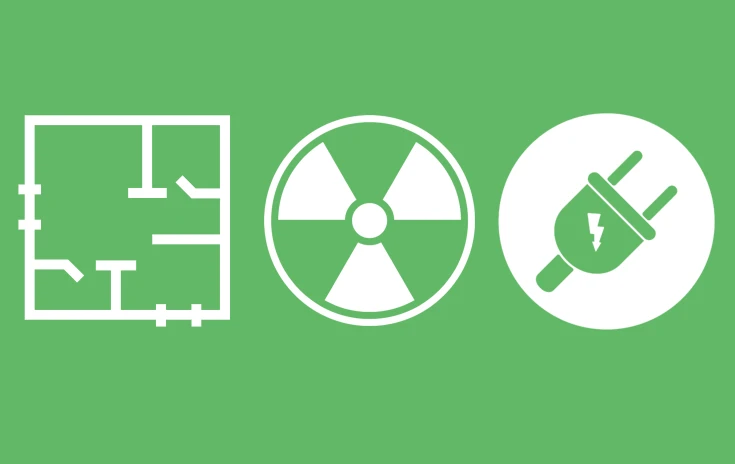A computed tomography (CT) scanner is a major capital investment and probably the most significant in the history of your practice. That investment could increase your referrals (and your income) exponentially, but there are several logistical factors to consider before you make the purchase.
- Floorspace
- Radiation Shielding
- Electrical Requirements
If you overlook the requirements of installing a CT scanner, such as floor space, radiation shielding, and electrical power, you might wind up wasting your time and money on a modality that you won’t be able to use, or investing in the wrong type of CT scanner for your practice.
Let’s examine these three important factors to consider before purchasing a veterinary CT system.
Floor Space
A CT scanner can take up a large chunk of your clinic’s floor space. A conventional (fixed) CT requires:
- A dedicated 14 feet x 20 feet room
- An adjacent 14 feet x 7 feet control room
- Lead-lined walls
- Lead glass between the scan and control rooms
- A dedicated three-phase 480V electrical transformer
The median CT fee to pet owners is about $800 per scan, so if you will be scanning patients multiple times per day every day, the investment in floor space or build-out is certainly justified. But if you only intend to use your CT two or three times per week, a portable CT scanner would be a smarter investment.
Portable CT systems can achieve the same image quality as “fixed” systems, but they take up much less floor space. Their requirements are as follows:
- A 10 feet x 10 feet room
- No lead-lined walls
- A standard 110V electrical outlet
- Wireless connectivity
- A portable workstation.
A portable CT system does not require a dedicated scanning suite. When it is not in use, you can push it against the wall or even into another room. That means you can turn your surgery, radiology, or even exam room into a scanning suite and make the most efficient use of your floor space at all times.
Radiation Shielding
Radiation safety and compliance make up a significant portion of the overall cost of installing a CT scanner. If you purchase a conventional CT system, the walls in your scanning suite must be lead-lined to keep the radiation confined to the scan room. This is expensive and requires an engineer, and often a state official to be involved in the planning phase, the building phase, and post-installation to ensure compliance.
Some clinics opt for self-shielding CT scanners, which have lead within their gantries to attenuate the scattered X-rays. This significantly reduces radiation levels—even in close proximity to the scanner.
If you invest in a self-shielding CT scanner, you won’t need lead-lined walls in your scanning suite, which considerably reduces the cost of build-out. As an added benefit, you and your personnel can be present during the scan so you can attend to the patient at all times. This isn’t possible when using a CT scanner that lacks self-shielding technology; you would have to remain in the control room and monitor the patient through lead-lined glass, which makes it challenging to attend to the patient in real-time.
Electrical Requirements
Both X-ray generation and gantry rotation require significant electrical power. Beyond the cost of electricity, there are logistical and compliance considerations when using so much power.
Fixed CT scanners require three-phase 480 V transformers. Your clinic will have to petition the city or town for the rights to install and consume this much electricity. In some cases, the city simply will not authorize such an installation due to local consumption limits. In other cases, the clinic is too far from the nearest electrical tower to generate enough power.
Even if the city or town approves your CT installation, you will still have to coordinate with engineers from the electric company and state during the planning process, the wiring of the building, and the construction of the actual CT suite.
Conclusion
The decision to purchase a CT scanner certainly comes with logistical and financial considerations, but some practical insight can help decide the right fit for you.
If you would like more information about the installation requirements associated with veterinary CT, call SOUND® at 800-268-5354. You can learn more about SOUND®’s CT systems by following these links >>> CereTom® CT | BodyTom® CT

